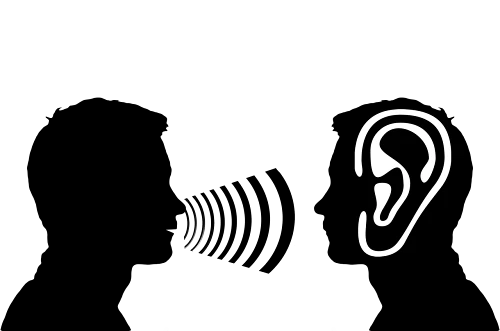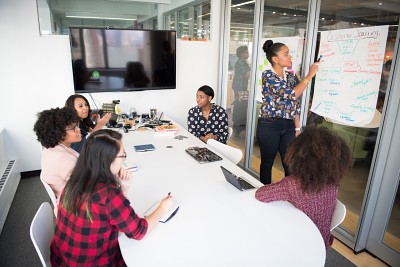HOW TO BECOME AN ACTIVE LISTENER?
Most communication failures are usually due to our own need to say something. We tend to react to what is said rather than focus on what the other person is trying to say.
In short, we listen to respond, not to understand. If you doubt this, take someone around you, try talking to them about a problem you’re having, and see how long it takes them before they interrupt you to describe a similar experience or give you advice ( which you probably didn’t ask for).
A conversation is often a pretext to share our experiences and feelings, not an opportunity to meet the other and open ourselves to new points of view. We are only interested in the prospect of talking about ourselves. It’s normal; it’s human. But this is not inevitable.
In this article, you will learn that it is possible to change our communication habits, be more available, and take a deep interest in who is speaking and what they are saying by finding out more about becoming an active listener.
HOW TO BECOME AN ACTIVE LISTENER?
To become an active listener, you should remain neutral and non-judgmental and therefore try not to take sides or form opinions, especially at the beginning of the conversation. You must also be patient because it is vital to grant pauses or silences to the speaker to allow him time to build or explore his thoughts.
While hearing is innate, passive, automatic, and involuntary, attentive listening is acquired, voluntary, engaging, and intentional. Akin to nonviolent communication, it is an active process in which a conscious decision is made to listen to and understand the speaker’s message; listening intently means concentrating fully on what is being said rather than just listening passively.
This requires several things:
- Being willing to learn something new;
- Spending more time listening than talking;
- Summarize what the other person is saying to make sure you understand it;
- Offer attention and empathy so that the speaker feels confident;
- Observe non-verbal language and verify that words match gestures.
- Listening attentively can calm, even eliminate, the worries, fears, or uncertainties of others.
- It’s constructive if your partner is upset, you’re dealing with angry customers or co-workers, or you’re trying to communicate with young children.
As an active listener, you offer support and encouragement, even when you don’t know how to solve the problem. Showing that you can help someone in any situation, regardless of your own experience or expertise, helps build trust and strengthens relationships.
Being present and attentive to the words of others is a great way to avoid or defuse arguments quickly. Instead of banging your head against the wall (spoiler alert: the wall always wins) or running around in circles, you save time and energy by being able to calm the other person down and get your point across with kindness.
Learn More about Active Listening…
-

Active Listening Skills: Definition, How to Improve Active Listening
Signs of Good Active listening
Active listening bypasses verbal and non-verbal cues.
A. Verbal signs of Active Listening
| – To ask questions | Not only should you ask questions when you don’t understand something, but it’s equally important to check if you and the speaker are both on the same page. This is done by asking questions. In addition to improving self-awareness in conversation, questions lead the other person to see things from a different point of view, thus promoting quality communication. |
| – To clarify | Clarification involves asking questions of the speaker to ensure that the message has been received. This generally involves using open-ended questions that allow you to expand on specific points if necessary. |
| – Repeat / Paraphrase | To show that you are listening carefully and that you understand, occasionally repeat what you think the person said, paraphrasing what you heard. For example: “If I understood correctly, you say that…” |
| – To summarize | Summarizing what was said is an excellent technique to check your understanding of what is being said. This consists of taking the main points of the message received and reiterating them logically and clearly, allowing the speaker to correct them if necessary. For example: “So it seems to me so. . . Or “Is that right?” » |
| – Positive reinforcement | Although this is a strong signal for attention, caution should be exercised when using positive reinforcement. While particular words of encouragement are beneficial to the speaker, the listener should use them sparingly so as not to distract from what is being said or unnecessarily emphasize certain parts of the message. Repeated use of words and phrases such as “very good,” “yes,” or “indeed” can become irritating to the speaker. It’s better to explain why you agree with a particular point than repeatedly repeating “yes, yes.” |
B. Non-verbal signs of Active Listening
Did you know that non-verbal language makes up about two-thirds of all communication? It is therefore vital to give it our full attention.
When we are relaxed, our gestures and voice messages match, leaving no room for doubt. On the contrary, when we are tense or stressed, our physical signals can send a different message from the one we are trying to send orally. Remember this as you listen and, if situations permit, clarify the speaker’s emotional state.
| – To smile | Smiles can show that the listener is paying attention or agreeing with what is being said. Combined with nods, they are powerful in affirming that messages are heard and understood. |
| – Eye contact | Eye contact is probably an essential thing to consider when talking to someone. Looking the other person in the eye doesn’t necessarily mean you’re present and active in the conversation, but it’s the first step to empathy. |
| – Posture | Body positioning says a lot about interpersonal interactions. The active listener tends to lean slightly forward or to the side when seated. A slight tilt of the head is also a sign of interest and an invitation to exchange. |
| – The mirror | Mirroring is the process by which a listener physically reflects a speaker. This involves facing him, making eye contact, positioning body parts the same as him, and using a similar tone of voice. Because speakers feel closer to listeners who have similar mannerisms or methods of communication, mirroring contributes to a better connection. |
The 8 Traits of an Active Listener
Becoming an active listener involves different attitudes and developing certain traits:
– To Be empathetic
- Please don’t settle for what people say; ask yourself why they say it. Put your ego aside and explore the feelings behind the words.
- By putting yourself in the other person’s shoes and seeing the situation through their eyes, you allow them to express their true feelings.
- Apart from giving her complete attention is one of the most generous things you can do, it also allows you to amplify your point of view on different topics.
– To remember
- Recalling a few key points, or even the speaker’s name, can help confirm that the messages sent were received and understood – that is, the listen was successful. Remembering details, ideas, and concepts from previous conversations proves that attention has been retained and the speaker is likely to continue.
– To Have an open mind
- We all have different life experiences, and therefore we do not necessarily share the same belief systems. Having an open mind means being ready to recognize worldviews that differ from your own.
– To Leave room for silence
- Silence can allow the speaker to think about what they are telling you. This helps obtain additional information about his point of view or establish connections between ideas. Sometimes the silence may reflect emotional discomfort; providing this space can allow someone to say what they feel.
– Do not interrupt
- Interrupting the speaker breaks their momentum and limits your understanding of the message. It’s a waste of time.
- The whole practice of active listening revolves around respect. You listen because you value other people’s opinions and want to know more about them; therefore, respect them by letting them finish speaking before responding.
– To Suspend own needs
- When we listen to others, we sometimes have to – at least momentarily – suspend our own emotional needs.
Imagine putting your needs on a shelf when you need to listen to someone else.
Seeing needs as tangible objects—that we can pick up and put on a shelf—can help us feel more in control. When on the shelf, they are visible but not heavy; we know them, but we don’t let them get to us. They do not interfere with the rest. Of course, they can’t sit on the shelf indefinitely, but they can be placed there temporarily. At the same time, we take on other responsibilities – in this case, being fully present in active listening.
To prepare for suspending needs, consider quickly jotting down some of your thoughts and feelings before a critical interaction. You can also mention to the speaker that you face some issues but can promptly resolve them.
– To Regulate emotions
- Poor management of emotions harms listening and colors our communication.
- When we experience intense emotions, we react impulsively with shouting, crying, hurtful words, or aggressive behavior.
- This chaotic emotional state prevents us from hearing our rational thoughts, much less what another person is saying, and therefore from communicating effectively.
- That’s why it’s best to slow down and listen to what we want and what others can expect from us. By understanding our emotions, we are better able to regulate them.
– To Confront our assumptions
- More often than not, we are upset by assumptions we make that don’t match reality. We most often find that they are unfounded by confronting them with the facts.
Learn More about Active Listening from the Articles below
-

Active Listening Skills: Definition, How to Improve Active Listening
Conclusion
Listening is one of the most important skills you can develop to ensure healthy communication. This is more about focusing on what is being said rather than just hearing the message and giving the other person time to explore their thoughts and feelings. This is called active listening. Your quality as a listener has a significant impact on your effectiveness at work and your relationships with others.
Reference and Further Reading
7 Tips on How To Practice Active Listening.










